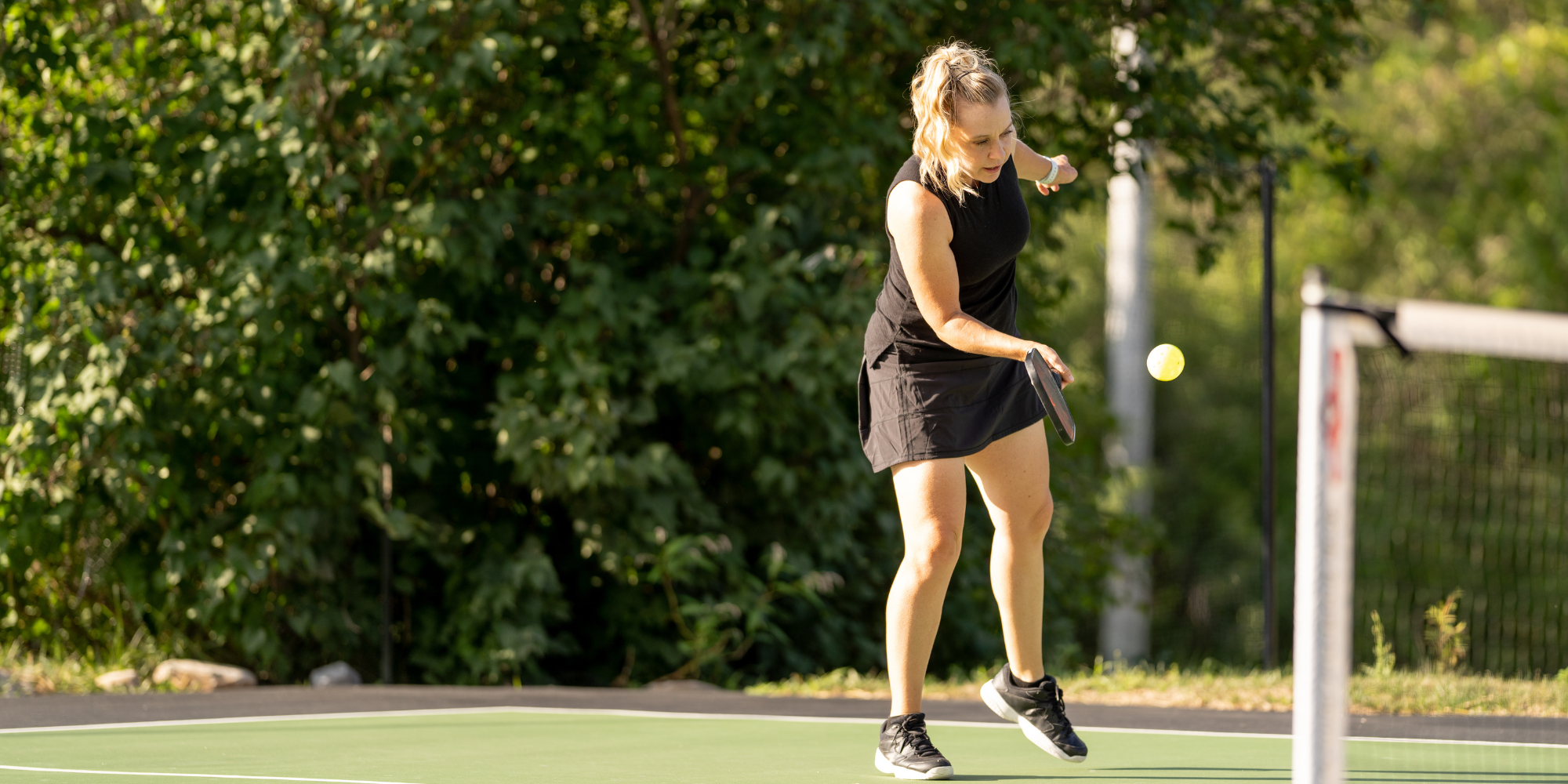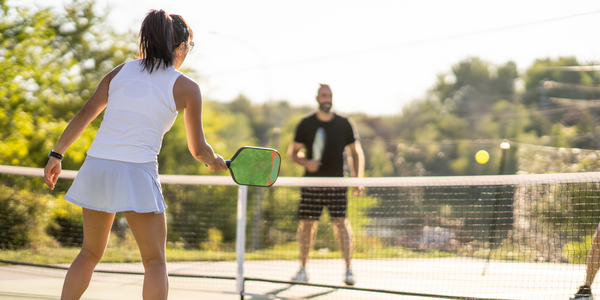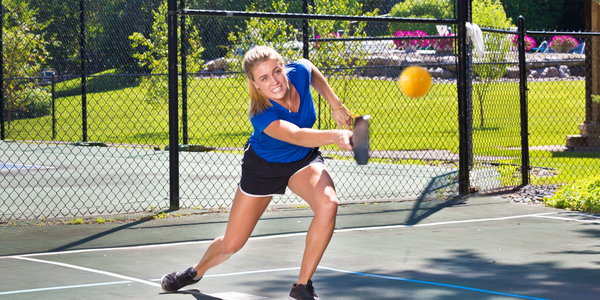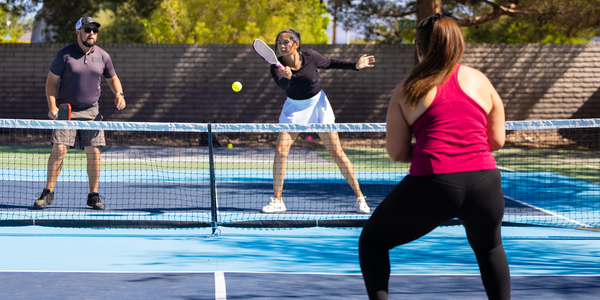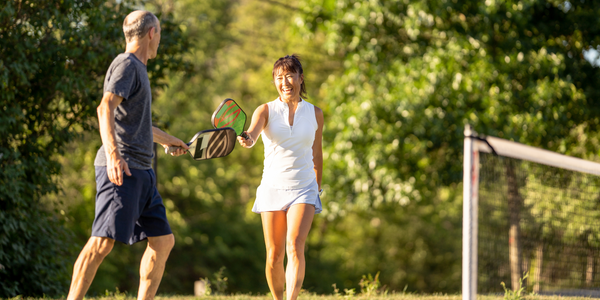The serve in pickleball is pivotal, offering more than just a rally initiation—it’s your first strike, an essential tactic to secure an advantage. This guide dives deep into techniques, strategies, and tips to refine your pickleball serve, transforming it from a mere gameplay necessity to a formidable weapon in your arsenal.
I. Understanding the Basics:
A strong foundation is crucial for mastering the pickleball serve. Understanding the basic rules and mechanics of the serve is the first step in leveraging this critical aspect of the game to your advantage.
1. Rules and Regulations:
Familiarize yourself with the specific regulations surrounding the pickleball serve, including the correct service motion which must be underhand with the paddle below the waist, and understanding the service box dimensions. Compliance with these rules ensures your serve is legal and effective.
2. The Importance of a Good Serve:
A proficient serve sets the tone for the rally, creating immediate pressure on the opponent and establishing a tactical advantage from the outset. Learn how a well-executed serve can control the pace of the game and place your opponent in a defensive position.
II. Stance and Grip:
The correct stance and grip are foundational for a powerful and accurate pickleball serve. These elements influence your control and the serve's effectiveness, making them critical to master.
1. Proper Foot Position:
Position your feet shoulder-width apart, with the foot on the side of your paddle hand slightly behind, to ensure balance and stability. This stance allows for a full range of motion during the serve.
2. The Continental Grip:
Utilize the Continental grip on your paddle for increased control and versatility in your serves. This grip is essential for executing various serve types effectively, from soft arcs to powerful drives.
III. Service Techniques:
Developing a range of service techniques enhances your ability to keep opponents guessing and adapt to different gameplay situations.
1. The Underhand Serve:
Master the underhand serve, ensuring the paddle head remains below your wrist at the point of contact for legal delivery. This technique is fundamental and should be practiced for consistent, accurate performance.
2. Contact Point:
Focus on striking the ball at the lowest point of its trajectory to ensure consistency and accuracy in your serves. This helps in maintaining a low, challenging flight path for the opponent.
IV. Power and Placement:
Integrating power and strategic placement can significantly amplify the effectiveness of your pickleball serve, making it a critical part of your gameplay strategy.
1. Generating Power:
Leverage your shoulders and hips to generate power without sacrificing control. A powerful serve can overwhelm opponents and set up advantageous rally conditions.
2. Strategic Placement:
Practice placing your serves in challenging positions for your opponents, such as deep in the corners or targeting weak spots like the backhand. Placement can disrupt your opponent's positioning and return strategy.
V. The Advanced Serve Techniques:
Advanced serving techniques can provide a competitive edge, making your pickleball serve unpredictable and difficult to counter.
1. The Spin Serve:
Incorporate spin into your serves by manipulating the paddle angle and speed at the point of contact. This advanced technique makes the ball's trajectory unpredictable, complicating the return for your opponent.
2. The Drive Serve:
Develop the drive serve for a fast, flat delivery that can catch opponents off guard. This pickleball serve is particularly effective in applying immediate pressure and reducing the opponent’s reaction time.
VI. Troubleshooting Common Serve Issues:
Even experienced players can encounter issues with their pickleball serve. Identifying and addressing these challenges is key to maintaining a high-quality serve.
1. Consistency is Key:
Focus on the consistency of your serve to minimize faults and enhance reliability. Regular practice under varied conditions can help stabilize your serve's effectiveness.
2. Adjusting for Opponents:
Adapt your serving strategies based on your observations of an opponent's strengths and weaknesses. Tailoring your serve to exploit these observations can significantly impact the effectiveness of your game strategy.
VII. Drills for Serve Mastery:
Specific drills can sharpen your serve, enhancing both accuracy and effectiveness.
1. Target Practice:
Use target practice to refine the accuracy and placement of your pickleball serve. Setting up targets in various parts of the service box can help develop precision.
2. Serve and Move:
Combine serving with movement drills to ensure you are always ready for the return. Practicing quick transitions from serving to the ready position improves your responsiveness during rallies.
VIII. Assessing and Improving Your Serve:
Continuous evaluation and adaptation are crucial for mastering your pickleball serve. This ongoing process helps pinpoint areas for improvement and ensures your serve evolves with your overall game strategy.
1. Regular Assessment:
Regularly assess your serving technique and outcomes to identify inconsistencies or weaknesses. Utilize video analysis or work with a coach to visually critique your form and execution, ensuring that each aspect of your serve is performed optimally.
2. Seeking Feedback:
Actively seek feedback from coaches, peers, or more experienced players. External insights can provide new perspectives on your serve, highlighting areas that may not be evident through self-assessment. Use this feedback to refine your technique and tactical approach.
IX. Leveraging Technology for Serve Improvement:
Incorporate modern technology to gain detailed insights into your serving mechanics and make precise improvements.
1. High-Speed Video Analysis:
Use high-speed video analysis to break down your serve frame-by-frame. This allows you to observe subtle aspects of your technique that are difficult to catch in real-time, such as the angle of racket impact and body posture.
2. Wearable Tech:
Consider using wearable technology that provides real-time data on your serve speed, spin, and point of impact. This data can help you make immediate adjustments and track your progress over time.
X. Psychological Aspects of Serving:
The mental component of serving is as critical as the physical execution. Cultivating the right mindset can enhance your confidence and consistency in pressure situations.
1. Mental Visualization:
Practice mental visualization to improve your serve. Before each match, visualize yourself executing the perfect serve repeatedly. This mental rehearsal can boost your confidence and focus during actual pickleball serve and real-life gameplay.
2. Routine Development:
Develop a consistent pre-serve routine that helps you focus and relax. This routine could include deep breathing, specific thoughts, or a series of physical movements to prepare for each serve.
Conclusion:
Mastering the pickleball serve is not just about consistent practice but involves a keen understanding of techniques, strategic implementation, and mental conditioning. By integrating advanced techniques, continuously assessing and improving your skills, and leveraging both feedback and technology, your serve can become a significant strategic asset in pickleball.
This comprehensive approach ensures that your serve not only meets the highest standards of competitive play but also contributes immensely to your overall game, distinguishing you as a formidable player on the court.


